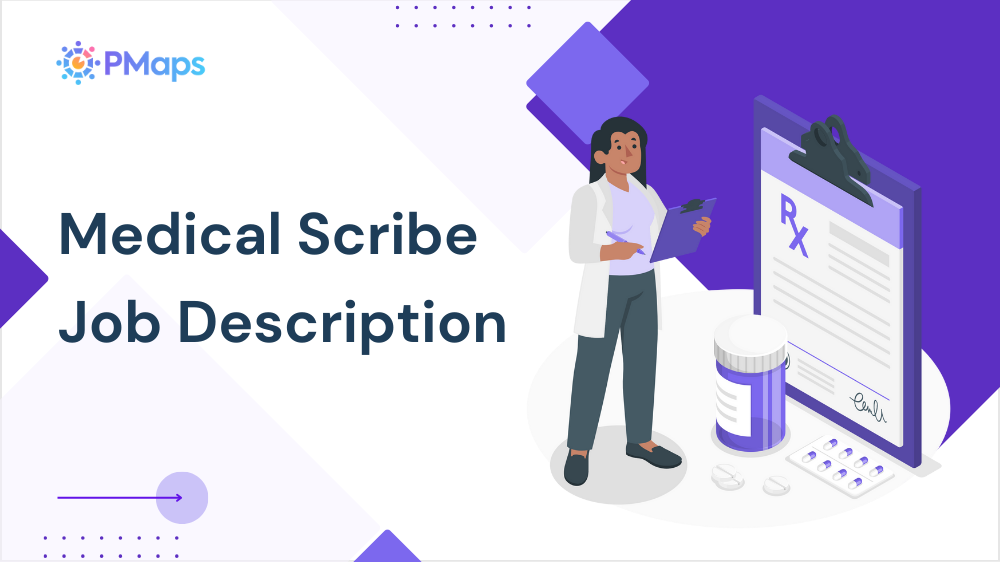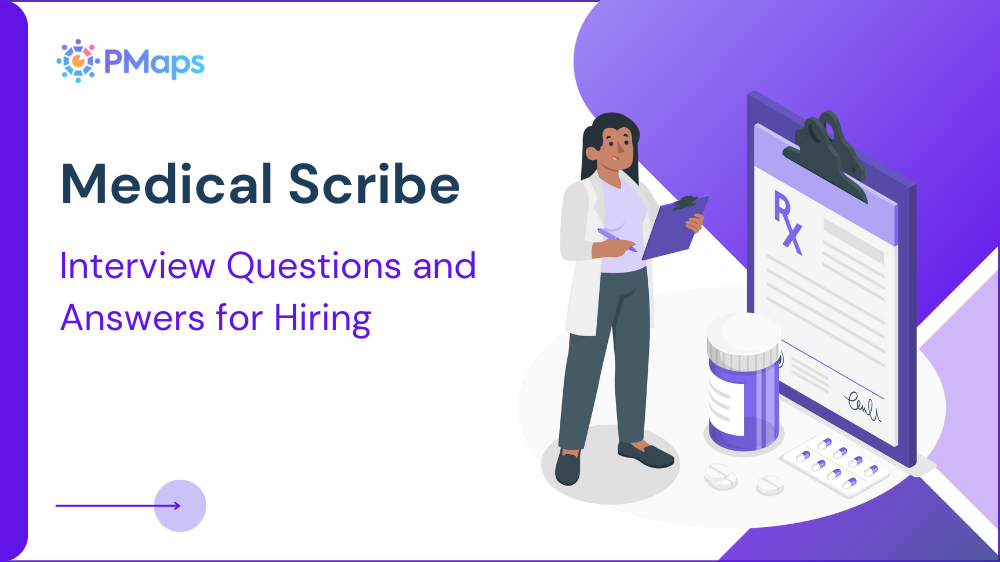
Medical coder interview questions measure accuracy, compliance, and speed across specialties, payers, and settings where documentation precision directly protects revenue. Great coders read clinical notes precisely, apply guidelines correctly, and resist pressure to guess or inflate ambiguous documentation under stress.
This guide gives structured prompts, hiring signals, and model answers to help teams compare candidates fairly during interviews across specialties. Use it to test judgment, coding standards knowledge, and throughput control without risking compliance, patient trust, or payer relationships today. Pair interviews with realistic tasks and consistent rubrics so hiring decisions favor accuracy first, then sustainable productivity over time always.
Benchmark coding accuracy fast—run candidates through our Medical Coder test.
General Interview Questions for Medical Coders
Begin with broad prompts that reveal foundation, ethics, and role awareness. Use this set to gauge clinical reading, coding judgment, and documentation discipline. Keep an eye on clarity and humility. Strong candidates show standard knowledge and admit unknowns early. They also explain how they confirm uncertain details politely.
1) How do you prioritize accuracy versus productivity on busy days?
What it assesses
Risk judgment and throughput control.
What to look for
Reference to accuracy first, with measured output goals. Mention of flags for unclear notes.
Sample answer
“I place accuracy first. I keep daily targets visible, then pace work across slots. Ambiguous notes get flagged for provider queries. I avoid rushing complex charts. Clean first pass prevents rework and denials.”
2) Which coding sets have you used most in your last role?
What it assesses
Toolbox breadth and real exposure.
What to look for
ICD-10-CM, CPT, and HCPCS Level II. Setting context, like inpatient or professional.
Sample answer
“I coded professional claims using ICD-10-CM, CPT, and HCPCS. I handled E/M, minor procedures, and infusions. I also used NCCI edits and payer policies to validate pairs.”
3) How do you handle ambiguous documentation?
What it assesses
Query discipline and compliance.
What to look for
Provider query language, no leading questions, and audit-safe steps.
Sample answer
“I issue a compliant query with clinical indicators and choices, including ‘unable to determine.’ I never suggest diagnoses. I file the query and code only after signed clarification.”
4) Describe your process for staying current with coding changes.
What it assesses
Learning habits and standard updates.
What to look for
Use of official guidelines, payer bulletins, and scheduled study time.
Sample answer
“I review the ICD-10-CM guidelines each cycle and CPT updates yearly. I track payer notices and MAC changes weekly. I keep a change log for team reference.”
5) How do you reduce first-pass denials?
What it assesses
Preventive checks and pattern review.
What to look for
LCD/NCD awareness, modifier logic, and medical necessity checks.
Sample answer
“I validate diagnosis to policy, apply correct modifiers, and confirm units. I review common denial codes monthly and add checklist steps to stop repeats.”
Behavioral Interview Questions
Behavior prompts surface discipline, coachability, and integrity. Use STAR follow-ups and press for numbers. Look for calm choices under pressure, respectful queries, and measured results. The best answers show a pattern: find errors, fix processes, track outcomes, and share learning with peers for repeatable gains.
6) Tell me about a time you found a revenue-impacting error.
What it assesses
Attention to detail and courage to escalate.
What to look for
Specific chart class, fix applied, and verified result.
Sample answer
“I noticed missed infusion hours in oncology. I created a time-capture tip sheet. Implementation raised average units by eight percent without denials.”
7) Describe feedback that changed your coding approach.
What it assesses
Coachability and growth.
What to look for
Concrete advice, new habit, and metric shift.
Sample answer
“QA flagged my overuse of -25. I studied payer rules and refined criteria. My avoidable denials dropped by half the next quarter.”
8) Share the time you handled pushback on a compliant code choice.
What it assesses
Professional communication and standards use.
What to look for
Citations from guidelines, polite tone, and resolution.
Sample answer
“A provider wanted a higher E/M. I cited 2023 E/M rules and documented time. We aligned after I shared an example note. The relationship stayed strong.”
9) Tell me about improving throughput without quality loss.
What it assesses
Process sense and tooling.
What to look for
Batching, templates, and edit use. Include numbers.
Sample answer
“I grouped similar specialties and pre-checked policies. Charts per hour rose from 10 to 13. QA accuracy remained at 98.5 percent.”
10) Describe a time you owned a mistake.
What it assesses
Integrity and recovery steps.
What to look for
Prompt correction, disclosure, and prevention.
Sample answer
“I miscoded a vaccine admin unit. I filed a correction, alerted billing, and added a unit verification step. No repeat since.”
Situational Interview Questions
Situational prompts test judgment when rules, payers, and documentation collide. Strong candidates show a clear triage order: verify documentation, check coverage policy, apply guidelines, then select codes and modifiers. They log edge cases, ask compliant queries, and document steps for audit clarity.
11) You suspect upcoding pressure on E/M. What do you do?
What it assesses
Ethics and escalation.
What to look for
Policy citation and neutral language.
Sample answer
“I code to 2023 E/M rules only. I share the rubric and sample notes. If pressure continues, I will escalate through compliance with records.”
12) A payer denies medical necessity. What is your workflow?
What it assesses
Appeal structure and evidence use.
What to look for
Policy match, note excerpt, and corrected code if needed.
Sample answer
“I compare LCD/NCD criteria to the note, attach indicators, and add missing specificity via provider addendum when appropriate. If the policy is clear, I adjust and resubmit.”
13) You receive conflicting hospital and professional documentation. Next step?
What it assesses
Source reconciliation.
What to look for
Primary record selection and query choice.
Sample answer
“I treat the attending note as primary for diagnoses. I query to reconcile conflicts, then align professional and facility codes per rules.”
14) A new telehealth service appears in the schedule. How do you code it?
What it assesses
Place of service and modality awareness.
What to look for
POS, audio-only policy, and modifiers.
Sample answer
“I confirm modality, POS, and payer rules. I apply appropriate telehealth modifiers and code per E/M time or MDM if allowed.”
15) The note supports two procedures with NCCI issues. Your approach?
What it assesses
Edit resolution.
What to look for
Correct modifier use and bundling awareness.
Sample answer
“I review the NCCI rationale. If distinct and documented, I apply -59 or X modifiers as allowed. If bundled by rule, I drop the secondary code.”
Technical or Role-Specific Questions
This section probes standards depth and payer reality. Focus on ICD-10-CM specificity, E/M 2021–2023 changes, CPT procedure logic, and HCPCS supplies. Expect mention of DRG or APC where relevant, risk adjustment for HCC, and anesthesia units where applicable to the role.
16) Explain ICD-10-CM specificity for diabetes coding.
What it assesses
Diagnosis detail control.
What to look for
Type, complications, and laterality when relevant.
Sample answer
“I code type, control, and complications, like E11.65 for type 2 with hyperglycemia. I avoid unspecified details that exist in the note.”
17) How do you select E/M levels under 2023 office rules?
What it assesses
MDM and time literacy.
What to look for
Definition of data, risk, and problems.
Sample answer
“I assign by MDM or total time. I weigh problems addressed, data reviewed, and risk. I keep examples to support the chosen level.”
18) When do you append modifier -25 or -59?
What it assesses
Modifier governance.
What to look for
Clear, payer-safe criteria.
Sample answer
“-25 for a significant, separately identifiable E/M on the same day as a procedure. -59 for distinct procedural services that are not normally reported together, when documentation supports separation.”
19) Outline your approach to infusion and injection coding.
What it assesses
Hierarchy and time control.
What to look for
Primary code, sequential, and concurrent logic.
Sample answer
“I choose the primary service by hierarchy, then add sequential or concurrent codes. I capture start and stop times and drug details.”
20) What are HCCs and why do they matter?
What it assesses
Risk adjustment basics.
What to look for
Chronic condition capture and impact on reimbursement.
Sample answer
“HCCs group diagnoses into risk weights. Accurate chronic condition coding reflects patient risk and affects plan payments. I ensure codes are supported annually.”
21) How do you code postoperative complications?
What it assesses
Linking and exclusion logic.
What to look for
Complication codes with causal links and no routine findings.
Sample answer
“I confirm a documented link to the procedure, code the complication, and avoid unspecified postoperative codes when detail is present.”
22) Describe your method for anesthesia coding basics.
What it assesses
Units and modifiers.
What to look for
Base units, time units, and physical status.
Sample answer
“I total base and time units, then apply physical status and qualifying circumstances. I confirm surgeon and anesthesiologist roles with modifiers.”
23) How do you use NCCI edits in daily work?
What it assesses
Edit literacy.
What to look for
Checker tools and rationale reading.
Sample answer
“I run edits before submission, read rationale lines, and document reasons for allowed exceptions. This prevents repeated denials.”
24) What steps ensure LCD/NCD compliance?
What it assesses
Policy alignment.
What to look for
Diagnosis lists, frequency limits, and documentation items.
Sample answer
“I check covered diagnoses, frequency limits, and required note elements. I keep a quick reference for top services and update it monthly.”
25) How do you prepare for an internal or payer audit?
What it assesses
Audit readiness.
What to look for
Traceable logic and evidence files.
Sample answer
“I keep code rationales with excerpts, policy links, and time logs where needed. I run a sample self-audit and correct patterns before the visit.”
Hire not just faster but better as you attract the right candidate - use up-to-date Medical Coder job description template.
Pro Tips for Interviewing Medical Coders
Use brief, realistic tasks. Score with a simple rubric: accuracy, policy fit, and clarity. Add one chart with an NCCI trap and one with an E/M decision. Validate ICD-10-CM specificity on three common conditions. Pair interviews with a brief skills screen to standardize decisions across teams.
- Run a five-chart coding sample with one compliant query.
- Include a telehealth note requiring correct POS and modifier.
- Test HCC capture with chronic condition documentation.
- Review a denial and ask for an appeal outline.
- Calibrate on a shared QA rubric before offers.
Conclusion
Hiring the right medical coder means prioritizing accuracy, audit safety, and clear reasoning over raw speed or tool familiarity alone. Use these questions, signals, and tasks to verify standards knowledge, ethical judgment, and stable throughput under realistic documentation complexity scenarios.
When score evidence is ambiguous, prefer clarifications, not assumptions; protect integrity first, and sustainable revenue follows naturally across specialties and settings. Reach out to PMaps at 8591320212 or email assessment@pmaps.in for standardized healthcare assessment and custom interview questions for every role









